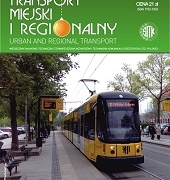Abstract 12/2016
Table of content
Sylwia Pogodzińska – Selected issues of cyclists safety
Piotr Buczek –Influence of noise on the loss of property value for selected residential settlements in Cracow
Anna Mikulska, Wiesław Starowicz – Method for determining the annual number of passengers in public transport in Cracow based on the number of tickets sold
Aleksandra Faron, Mariusz Dudek – Influence of surrounding of the Agglomeration Railway stops on passengers’ potential
Mariusz Wasiak, Marianna Jacyna, Michał Kłodawski, Piotr Gołębiowski –Model of freight traffic for agglomeration of Warsaw according to the Warsaw Traffic Survey 2015
Jan Aleksandrowicz – Comparison of the effects of different concepts of changes in the traffic within the first ring road in Cracow on the trams traffic in the city centre
Jakub Starczewski – Using of cargo bikes in the distribution of goods within urban areas
Abstracts
Sylwia Pogodzińska
Selected issues of cyclists safety
Abstract: The article presents cyclist safety with reference to other road users. Based on literature review, main factors contributing cycle-vehicle crashes have been identified, which are: vehicle speed, lack of visibility driver/cyclist, non-compliance with road marking and signing, overtaking cyclist. Accidents data from years 2007-2014 was used to describe cyclist safety in the Małopolska region. Analysis have been conducted based on number of cyclists crashes, injury and fatalities. Significant decrease of cyclist safety in 2014 was observed. Main types and circumstances of cyclist crashes were also indicated. Side crashes which are caused by failure to yield the right of way are the most frequent. It was shown that cyclist crashes occur mainly on tangent in built-up areas. The article also presents impact of selected infrastructural treatment on cyclist safety.
Key words: road safety, cyclist safety, accident
Piotr Buczek
Influence of noise on the loss of property value for selected residential settlements in Cracow
Abstract: The aim of this article is to determine the impact of traffic noise on urban settlements which are located in low distance to the road. The article presents a comparison of studies on noise propagation on two test sites in Cracow. The main subject of these studies was to determine the noise influence on multi-story buildings of selected housing estates, located in low distance from the noise source. Analyses have been based on initial measurements on test sites and also on simulation calculations which were carried out in „SoundPLAN 7.4” software. Assessment of the noise impact was performed using the surfaces of the buildings walls, which were related to the area of apartments exposed to the noise. This method made possible to assess the noise impact on the loss of value of the property using the adopted NSDI indicator (Noise Sensitivity Depreciation Index). Additionally the overview of the „MPZP” cover in Poland for selected cities has been made. Also analysis of the location of current investments on the „MPZP” in Cracow has been conducted and presented.
Key words: acoustic climate, road noise, spatial planning, impact of noise on the valuation of properties
Anna Mikulska, Wiesław Starowicz
Method for determining the annual number of passengers in public transport in Cracow based on the number of tickets sold
Abstract: In order to adjust the supply of transport services to their demand it is necessary to know the number of passengers carried by urban public transport. On this basis the transport offer proposed by transport companies can be verified through properly planned service frequency and size of rolling stock. Currently number of passengers may be determined by conducting time-consuming and costly research. The article presents an algorithm for determining the number of passengers in public transport in Cracow based on the number of tickets sold. Using this algorithm number of passengers on public transport in Cracow in the years 2006-2015 have been determined. Data on the number of sold tickets has been taken from the reports of the Board of the Municipal Transport Company S.A. in Cracow prepared for the Management of Municipal Infrastructure and Transport in Cracow. At the end of the article the received results have been compared with those obtained by measurement and analysis of the structure of tickets purchased by passengers. Knowledge of historical data on number of carried passengers is also the basis for the prediction of this number in future – in coming years.
Key words: passenger transport, public transport, number of passengers
Aleksandra Faron, Mariusz Dudek
Influence of surrounding of the Agglomeration Railway stops on passengers’ potential
Abstract: The article presents evaluation concept of railway stops surrounding development (for exurbia area), that can function in the Agglomeration Railway System within Cracow Metropolitan Area. Road network model is significant issue for railway stops development, which has a structural impact for land use development and accessibility to the transport systems. The orthogonal or fractal road network model has positive and negative characteristics for the railway stops potential development. Evaluation criteria include the accessibility to the transport systems stops and the spatial development issue (in article two railway stops will be presents, as an example of two different road network models with the transport systems service). The proper development of those stops could increase theirs attractiveness and provide effective passengers’ potential which will contribute with the agglomeration railway system financial issues.
Key words: transport systems, agglomeration railway system, railway stops, passengers’ potential
Mariusz Wasiak, Marianna Jacyna, Michał Kłodawski, Piotr Gołębiowski
Model of freight traffic for agglomeration of Warsaw according to the Warsaw Traffic Survey 2015
Abstract: The article describes a model of freight traffic which was prepared under the Warsaw Traffic Survey 2015. Assumptions adopted at the conceptual stage have been presented and general model and its implementation in the environment PTV VISUM have been described. Network model and demand model were characterized in details. Issues of model calibration have been presented as well. Presented model is a fully featured tool for modelling the traffic of vehicles in the area of Warsaw agglomeration. In addition, thanks to the cooperation with model of passenger traffic in the individual and public transport, as well as a model of bicycles, presented model is an integral part of a comprehensive tool for modelling, analysis and evaluation of mobility behaviour of inhabitants of Warsaw agglomeration, as well as operating businesses located in this area.
Key words: model of freight traffic, Warsaw Traffic Survey 2015, travel modelling
Jan Aleksandrowicz
Comparison of the effects of different concepts of changes in the traffic within the first ring road in Cracow on the trams traffic in the city centre
Abstract: The article presents the impact of the three changes concepts in the organization of traffic within the first ring road in Cracow on the trams traffic. Concepts of: one-way traffic zones, shared space zone and merger concept of one-way traffic with the shared space have been analysed. Each concept has been described in detail in the article. Based on the collected data simulation models have been prepared which allow assessment of each concept. Method of calibration has been described in the article as well as detailed description of all models has been presented. Results have been collected for both: trams and buses as well as for the morning and afternoon hours. They have been presented in the form of graphs and tables to enable easier comparison.
Key words: first ring road of Cracow , Aimsun, tram traffic
Jakub Starczewski
Using of cargo bikes in the distribution of goods within urban areas
Abstract: Cargo bike is an ecological and economical mean of transport. It can be a solution for problems such as air pollution, transport congestion or excessive noise and vibration occurring in the delivery zones in urban agglomerations. The article describes evolution of cycling fashion. It shows the differences between Poland and the Netherlands in terms of the length of bicycle paths and the number of users, as a factors that reflect the attitude of the public, relating to the cycle logistics. Basic types of cargo bikes were characterized with regard to their potential applications in the supply chain. The basic sectors of the use of cargo bikes and advantages flowing from their application in particular sectors were indicated. The most important advantages of cargo bikes: saving footprint relative to the vans, improvement of the tourist attractions of the historic city centres, improving supply, reduction of noise, vibration and emissions of harmful gases. The problem of the first and last mile logistics was discussed, as two of the most costly stages of transport. The article also describes some solutions based on cycle logistics, used by the transport companies in Europe.
Key words: cycle logistics, cargo bike, distribution, urban logistics

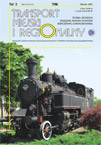 SITK RP
SITK RP 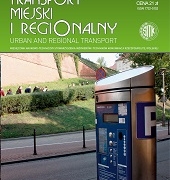
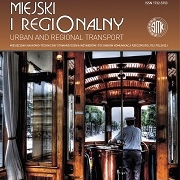
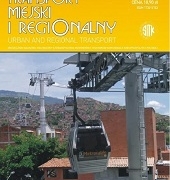 SITK RP
SITK RP 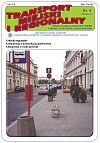 SITK RP
SITK RP 